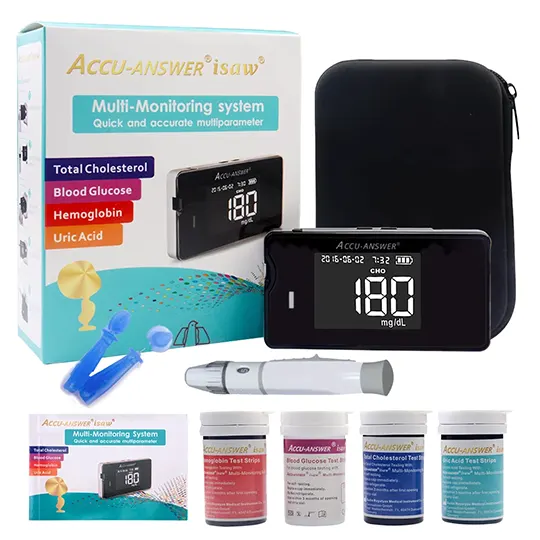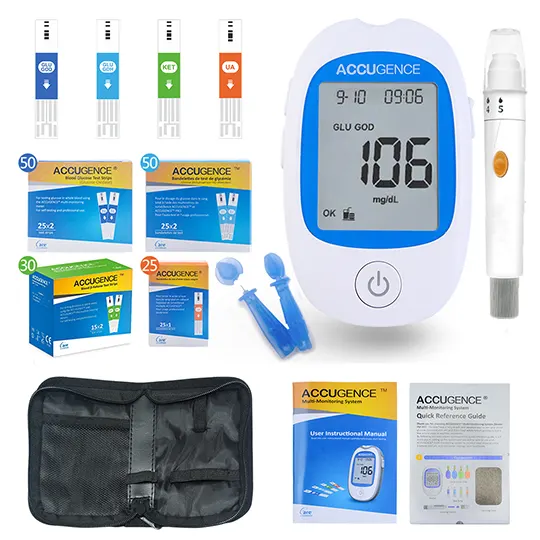Dosing and uses of Vyvanse (lisdexamfetamine)
Adult dosage forms and strengths
capsules: Schedule II
- 10mg
- 20mg
- 30mg
- 40mg
- 50mg
- 60mg
- 70mg
Attention Deficit Hyperactivity Disorder
Starting/switching treatment: 30 mg PO qAm
Dose adjustment: Increase by 10- to 20-mg/day increments approximately qWeek
Not to exceed 70 mg qDay
Binge Eating Disorder
Indicated for moderate-to-severe binge eating disorder (BED) in adults
Starting dose: 30 mg/day PO, THEn
Target dose: Titrate in increments of 20 mg at ~1 week intervals to achieve the recommended target dose of 50-70 mg/day
Not to exceed 70 mg/day
Discontinue if BED does not improve
Dosing Considerations
Prior to treatment, assess for presence of cardiac disease (eg, a careful history, family history of sudden death or ventricular arrhythmia, and physical exam)
To reduce the abuse of CNS stimulants, assess abuse risk before prescribing; after prescribing, keep careful prescription records, educate patients about abuse, monitor for signs of abuse and overdose, and reevaluate the need for the drug
Limitations of use
- Not indicated or recommended for weight loss
- Use of other sympathomimetic drugs for weight loss has been associated with serious cardiovascular adverse events
- The safety and effectiveness of lisdexamfetamine for the treatment of obesity have not been established
Dosage modifications
Renal impairment
- GFR 15 to <30 mL/min/1.73 m²: Not to exceed 50 mg/day
- End stage renal disease (GFR <15 mL/min/1.73 m²): Not to exceed 30 mg/day
Coadministration with drugs that alter urinary pH
- Agents that alter urinary pH can impact urinary excretion and alter blood levels of amphetamine
- Acidifying agents (eg, ascorbic acid) decrease blood levels, while alkalinizing agents (eg, sodium bicarbonate) increase blood levels
- Adjust lisdexamfetamine dosage accordingly
Pediatric dosage forms and strengths
capsules: Schedule II
- 10mg
- 20mg
- 30mg
- 40mg
- 50mg
- 60mg
- 70mg
Attention Deficit Hyperactivity Disorder
<6 years: Safety and efficacy not established
≥6 years: 30 mg PO qAM initially; may increase by 10- to 20-mg/day increments approximately qWeek; not to exceed 70 mg qDay
Vyvanse (lisdexamfetamine) adverse (side) effects
>10%
Anorexia (27%)
Insomnia (27%)
Xerostomia (26%)
Headache (12%)
Upper abdominal pain (12%)
1-10%
Irritability (10%)
Problem of growth and development, weight decreased (pediatric patients, 9% )
Nausea (7%)
Diarrhea (7%)
Seizure (4% )
Rash (pediatric patients, 3%)
Hyperhidrosis (3%)
Increased blood pressure (3%)
Increased heart rate (2%)
Dizziness (5%)
Emotional lability (3%)
Tremor (2%)
Tics (2%)
Vomiting (9%)
Frequency not defined
Serious
- Chest pain, sudden death (rare), myocardial infarction, palpitations, ventricular hypertrophy
- Cerebrovascular accident, Gilles de la Tourette syndrome
- Stevens-Johnson syndrome, toxic epidermal necrolysis due to drug
Postmarketing Reports
Ophthalmic disorders: Blurred vision, mydriasis, diplopia, difficulties with visual accommodation
Cardiovascular: Palpitations, cardiomyopathy
General disorders and administration site conditions: Fatigue
Hepatobiliary disorders: Eosinophilic hepatitis
Immune and allergy system disorders: Anaphylactic reaction, hypersensitivity, Stevens-Johnson syndrome, angioedema, urticaria
Nervous system disorders: Somnolence, seizure, dyskinesia, tics, bruxism
Psychiatric disorders: Psychotic episodes, mania, hallucination, depression, aggression, dysphoria, euphoria, logorrhea, dermatillomania
Genitourinary: Libido changes, frequent/prolonged erections
Gastrointestinal: Constipation, dysgeusia
Musculoskeletal: Rhabdomyolysis
Warnings
Black box warnings
Dextroamphetamine has a high potential for abuse; particular attention should be paid to the possibility of patients obtaining dextroamphetamine for nontherapeutic use or distribution to others, and the drugs should be prescribed or dispensed sparingly
Administration of dextroamphetamine for prolonged periods of time may lead to drug dependence and must be avoided
Contraindications
Hypersensitivity
Within 14 days of taking MAOIs (risk of severe hypertensive reaction)
Cautions
Use with caution in hyperthyroidism, glaucoma, mild to severe hypertension, advanced arteriosclerosis, symptomatic CVD, agitated states, history of psychosis or drug abuse
May cause psychotic or manic symptoms in patients with no prior history, or exacerbation of symptoms in patients with pre-existing psychosis; evaluate for bipolar disorder prior to stimulant use
Misuse of dextroamphetamine may cause sudden death and serious cardiovascular adverse events
Monitor blood pressure and pulse; consider benefits and risks before use in patients for whom blood pressure increases may be problematic
Sudden death has been reported in association with CNS stimulant treatment at recommended doses in pediatric patients with structural cardiac abnormalities or other serious heart problems; in adults, sudden death, stroke, and myocardial infarction have been reported; avoid use in patients with known structural cardiac abnormalities, cardiomyopathy, serious heart arrhythmia, or coronary artery disease
Patients who develop symptoms such as exertional chest pain, unexplained syncope, or other symptoms suggestive of cardiac disease during stimulant treatment should undergo a prompt cardiac evaluation
Particular care should be taken in using stimulants to treat ADHD patients with comorbid bipolar disorder because of concern for possible induction of mixed/manic episode in such patients; screen for risk factors for developing a manic episode before initiating
Aggressive behavior or hostility is often observed in children and adolescents with ADHD; monitor for the appearance of or worsening of aggressive behavior or hostility
Monitor growth of children ages 7 to 10 years during treatment with stimulants; may need to interrupt therapy in patients not growing or gaining weight as expected
Stimulants may lower convulsive threshold in patients with prior history of seizure, patients with prior EEG abnormalities in absence of seizures, and very rarely, patients without a history of seizures and no prior EEG evidence of seizures; discontinue therapy in the presence of seizures
Use with caution in patients who use other sympathomimetic drugs Amphetamines may exacerbate motor and phonic tics and Tourette’s syndrome; perform clinical evaluation for tics and Tourette’s syndrome in children and their families prior to treating with stimulant medications
Interrupt drug administration occasionally to assess if recurrence of behavioral symptoms sufficient to require continued treatment
Associated with peripheral vasculopathy, including Raynaud phenomenon
Difficulties with accommodation and blurring of vision have been reported with stimulant treatment
Use of stimulants may suppress appetite, especially in children, which may cause weight loss and slows the rate of growth
Rare instances of prolonged and sometimes painful erections (priapism), sometimes requiring surgical intervention, reported with methylphenidate products; typically not reported during initiation, but often subsequent to an increase in dose; seek immediate medical attention for abnormally sustained or frequent and painful erections
Pregnancy and lactation
Pregnancy category: C
Lactation: Amphetamines are excreted in breast milk; not recommended
Pregnancy categories
A: Generally acceptable. Controlled studies in pregnant women show no evidence of fetal risk.
B: May be acceptable. Either animal studies show no risk but human studies not available or animal studies showed minor risks and human studies done and showed no risk.
C: Use with caution if benefits outweigh risks. Animal studies show risk and human studies not available or neither animal nor human studies done.
D: Use in LIFE-THREATENING emergencies when no safer drug available. Positive evidence of human fetal risk.
X: Do not use in pregnancy. Risks involved outweigh potential benefits. Safer alternatives exist.
NA: Information not available.
Pharmacology of Vyvanse (lisdexamfetamine)
Mechanism of action
Prodrug of dextroamphetamine
Sympathomimetic amine that promotes release of dopamine and norepinephrine from their storage sites in the presynaptic nerve terminals; may also block reuptake of catecholamines by competitive inhibition
Absorption
Rapid absorption
Peak plasma time: 1 hr (lisdexamfetamine); 3.5 hr (dextroamphetamine)
Distribution
Vd: 3.5-4.6 L/kg; distributes into CNs
Elimination
Half-life elimination: 10-13 hr (dextroamphetamine); < 1hr (lisdexamphetamine)
Excretion: Urine (96%), feces (minimal)
Administration
Oral Administration
Take in AM with or without food
Avoid afternoon doses (potential for insomnia)
Swallow capsule whole
Unable to swallow capsule
- May open capsule and mix entire contents in yogurt, water, or orange juice
- If the contents of the capsule include any compacted powder, a spoon may be used to break apart the powder
- The contents should be mixed until completely dispersed and consumed immediately (do not store)
- The active ingredient dissolves completely once dispersed; however, a film containing the inactive ingredients may remain in the glass or container once the mixture is consumed
- Do not take a dose that is <1 capsule/day; do not divide a single capsule



